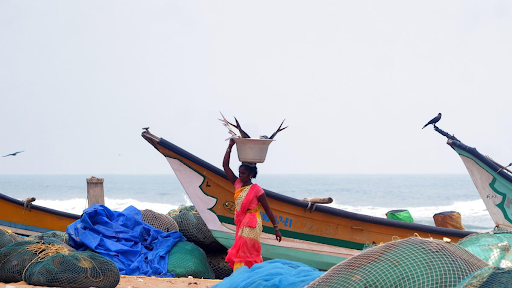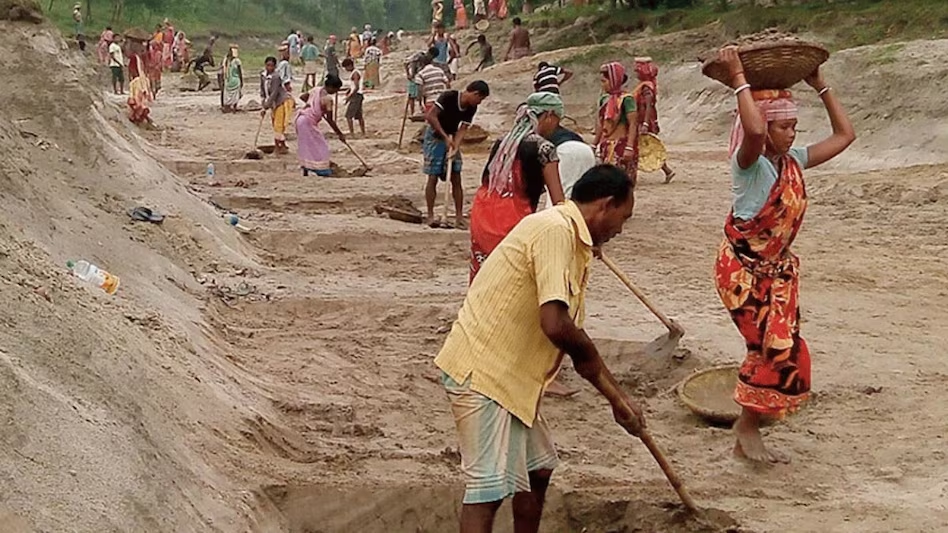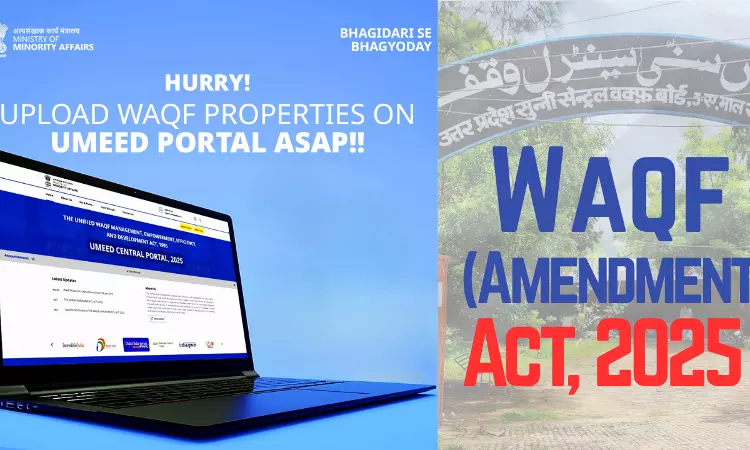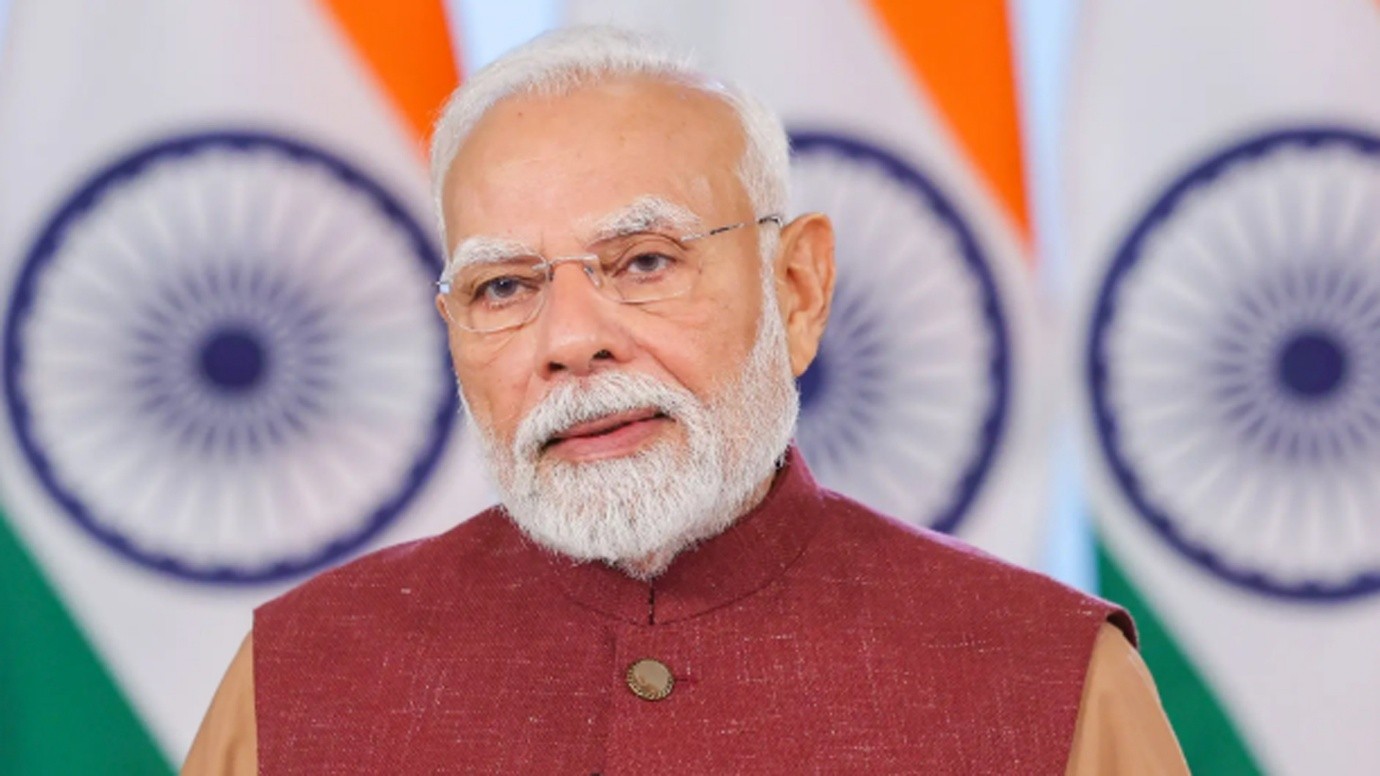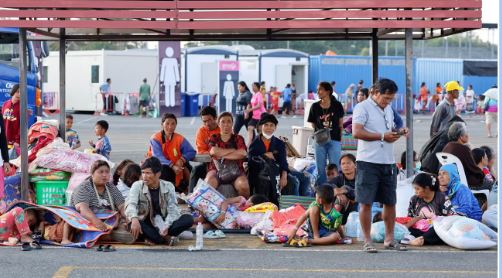Copyright infringement not intended
Picture Courtesy: THE HINDU
Context
The NITI Aayog released a report titled "India’s Blue Economy: Strategy for Harnessing Deep-Sea and Offshore Fisheries" to provide a detailed roadmap for transforming the deep-sea and offshore fishing sector into a sustainable and economically robust pillar of the national economy.
What is Deep-Sea and Offshore Fishing?
Coastal/Inshore Fishing: Fishing within the Territorial Waters, which extend up to 12 nautical miles (nmi) from the coast, most of India's fishing activity is currently concentrated.
Offshore Fishing: Fishing within India's Exclusive Economic Zone (EEZ).
Exclusive Economic Zone (EEZ)
It is a sea zone extending from 12 up to 200 nautical miles from a coastal state's shore. Defined by the 1982 United Nations Convention on the Law of the Sea (UNCLOS).
Rights of a coastal state in its EEZ
The UNCLOS grants a coastal nation several rights within its EEZ:
- Resource control: Exclusive right to explore, exploit, conserve, and manage all natural resources, both living (like fish) and non-living (like oil and natural gas), in the seabed, subsoil, and the water column above.
- Energy production: Right to produce energy from the water, currents, and winds.
- Infrastructure: Right to build and use artificial islands, installations, and structures.
- Scientific research: Jurisdiction over marine scientific research.
- Environmental protection: Authority to protect and preserve the marine environment and control pollution.
|
Deep-Sea Fishing: This is defined by depth, not distance. According to the Food and Agriculture Organization (FAO), it is any fishing activity occurring at depths greater than 200 meters.
High Seas Fishing: Fishing in Areas Beyond National Jurisdiction (ABNJ), i.e., beyond the 200 nmi limit of the EEZ.
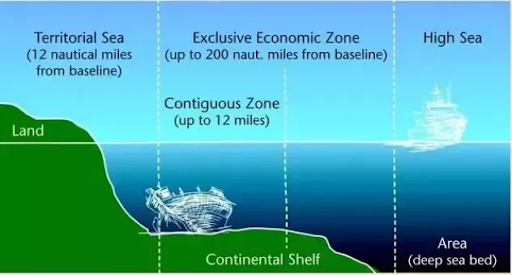
What are the Major Challenges Hindering India's Growth?
The report identifies a series of interconnected challenges that have prevented India from becoming a major deep-sea fishing nation.
Regulatory and Policy Gaps
- Lack of a Comprehensive Law: India currently does not have a specific law for regulating fisheries in its EEZ). This regulatory vacuum has contributed to issues of Illegal, Unreported, and Unregulated (IUU) fishing.
- Outdated Legislation: The Merchant Shipping (MS) Act, 1958, which governs vessel registration, is outdated and not suited for modern fishing vessels.
Severe Infrastructure and Technology Deficits
- Inadequate Fishing Harbours: Most fishing harbours are designed for shallow-water operations and cannot handle large deep-sea vessels.
- Broken Cold Chain: The lack of an integrated cold chain—from on-board freezing facilities to refrigerated transport and modern processing units—leads to high post-harvest losses (over 20% annually) and poor quality produce, which brings lower prices in international markets.
- Technological Gaps: Indian vessels often lack advanced fish-finding technologies (like sonar), modern vessel monitoring systems (VMS), and sustainable fishing gear (like circular hooks to reduce bycatch).
High Operational Costs and Financial Barriers
- Capital Intensive: Deep-sea fishing is highly capital-intensive. The cost of a modern deep-sea fishing vessel ranges from ₹50 lakh to ₹1 crore.
- Limited Access to Finance: Small-scale and artisanal fishers struggle to get loans from institutional lenders due to the high-risk nature of the operations and a lack of collateral.
Sustainability and Conservation Concerns
- Overexploitation Risk: High-value deep-sea species like tuna and deep-sea shrimps are highly migratory and vulnerable to overfishing.
- Bycatch and Habitat Degradation: Unsustainable fishing practices like bottom trawling cause significant damage to sensitive marine ecosystems, and the unintentional catch of non-target species (bycatch) like sharks and sea turtles is a major concern.
- Ghost Fishing: Lost or abandoned fishing gear continues to trap and kill marine life indiscriminately.
A Three-Phase Roadmap for Transformation
NITI Aayog proposes a comprehensive, multi-layered, and phased roadmap. The total indicative cost for the three phases is estimated to be over ₹8,000 crore, leveraging existing schemes like Pradhan Mantri Matsya Sampada Yojana (PMMSY) and the Deep Ocean Mission.
Phase 1: Laying the Foundation (2025-2028)
This phase focuses on creating the enabling ecosystem.
- Regulatory Overhaul: Enact a comprehensive legislation for the EEZ, update the Maritime Zones Act, and create a separate Vessels Act for modern fishing vessels.
- Infrastructure Development: Upgrade major fishing harbours and establish 10-15 minor deep-sea landing centers.
- Fleet Upgradation: Induct modern deep-sea vessels (longliners, trawlers) and support the development of domestic shipbuilding.
Phase 2: Scaling Up and Achieving Competitiveness (2029-2032)
This phase focuses on expansion and modernization.
- Fleet Modernization: Large-scale induction of advanced vessels, facilitated through cooperative ownership models.
- Strengthening Monitoring (MCS&E): Expand Vessel Monitoring Systems (VMS) to cover 100% of the deep-sea fleet and increase on-board observer programs.
Phase 3: Global Leadership in Sustainable Fisheries (2033 Onwards)
This phase aims to position India as a global leader.
- High-Value Product Development: Focus on developing niche and premium deep-sea fishery products for high-end global markets.
- Sustainability and Conservation: Enforce ecosystem-based fisheries management frameworks and expand marine protected areas.
Way Forward: Six Pillars of Reform
The NITI Aayog report consolidates its recommendations into six key areas of intervention:
- Comprehensive Overhaul: Create clear, unified laws for deep-sea fishing aligned with international standards (like UNCLOS), and streamline licensing and subsidy schemes.
- Institutional Strengthening and Capacity Building: Create a dedicated agency for holistic governance of deep-sea fisheries and expand research and data collection capabilities.
- Fleet Modernisation and Infrastructure Upgradation: Incentivize the adoption of modern vessels, develop an integrated network of deep-sea fishing ports, and invest in post-harvest processing and cold chains.
- Sustainable Fisheries Management: Operationalize marine spatial planning, enforce science-based catch limits, mandate the use of bycatch reduction technologies, and establish traceability systems from catch to consumer.
- Resource Mobilisation and Financing: Establish a dedicated Deep-Sea Fishing Development Fund, facilitate public-private partnerships (PPPs), and ease access to institutional credit and insurance.
- Stakeholder Inclusion and Partnerships: Develop co-management frameworks that include fishing communities, promote fisher cooperatives, and promote coordination between maritime agencies and research bodies.
Global Lessons for India
The report highlights crucial lessons from international deep-sea fishing nations that India can adopt:
- China's Scale and Warning: China's distant water fleet demonstrates the potential for large-scale operations, but it also serves as a warning against overfishing and the need for strict international regulation.
- Japan's Scientific Rigor: Japan's long history emphasizes the importance of using sound scientific data, stock assessments, and international cooperation (through bodies like the Indian Ocean Tuna Commission - IOTC) to manage shared migratory resources sustainably.
- Spain's Modernization: Spain provides a model for successful fleet modernization and adopting sustainable gear technology (like using circular hooks to reduce bycatch).
Conclusion
NITI Aayog’s strategic roadmap urges immediate action to shift from a fragmented, coast-focused approach to a coordinated, sustainable, and deep-sea-oriented strategy. This shift will unlock Blue Economy potential, strengthen food security, empower coastal communities, boost economic growth, and position India as a global leader in marine resource management.
Source: THE HINDU
|
PRACTICE QUESTION
Q. Discuss the concept of ‘Blue Economy’ and evaluate its significance as a key component of India’s maritime development strategy. 250 words
|
Frequently Asked Questions (FAQs)
The PMMSY aims to bring "Blue Revolution" by developing the fisheries sector in a responsible, equitable, and sustainable manner. It focuses on enhancing fish production and productivity, modernizing the value chain, increasing the income of fishers, and creating employment.
The KCC scheme was extended to fishers in 2018-19 to provide timely and adequate credit for their working capital needs. This includes expenses for seed, feed, maintenance, and other recurring costs at a concessional interest rate.
India is a major global player, recognized as the world's second-largest fish producer and the second-largest aquaculture producer. It contributes around 8% of the world's total fish production.




